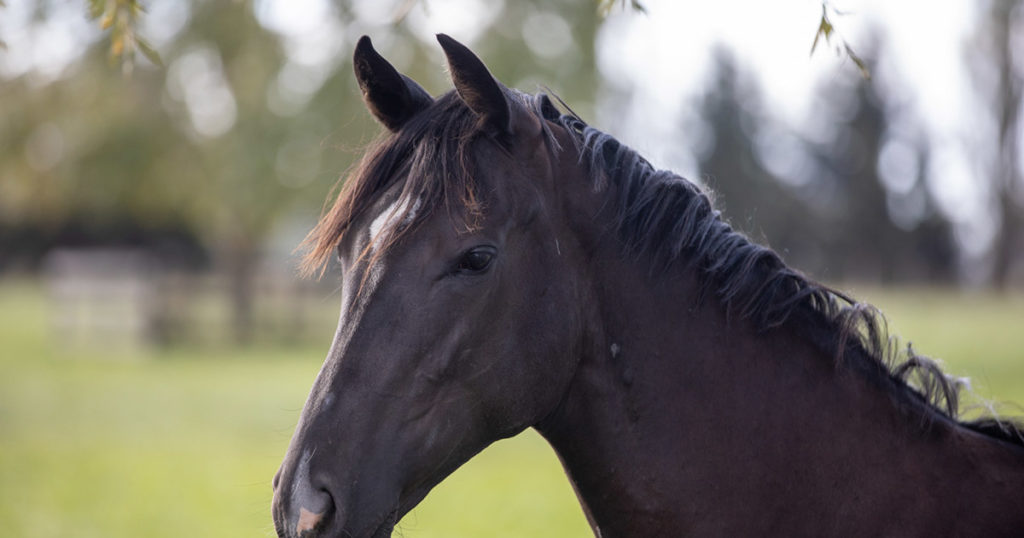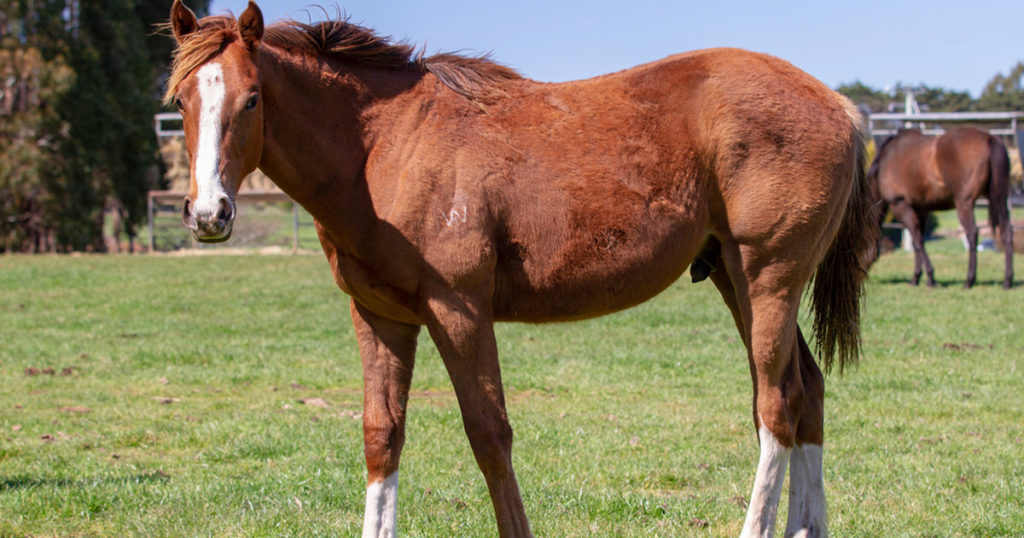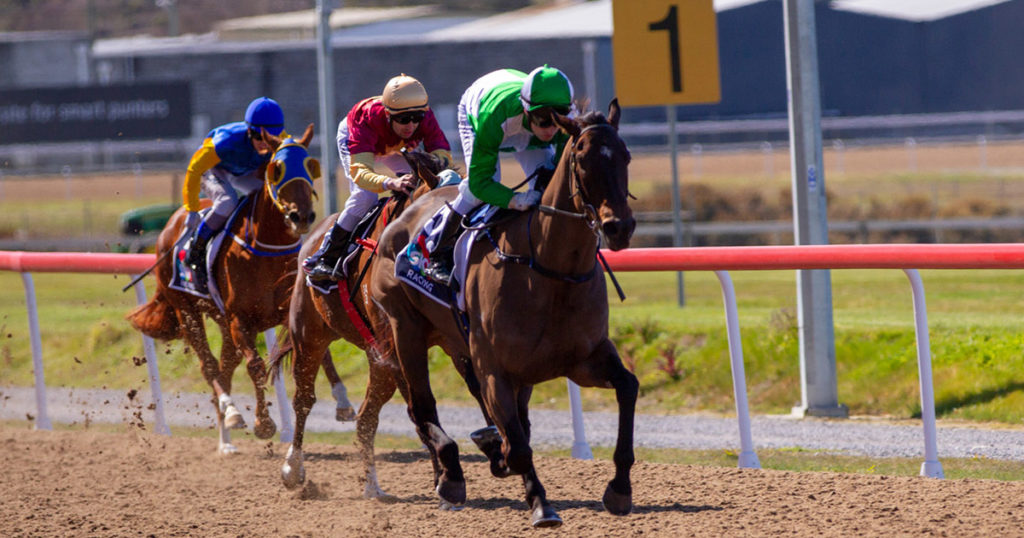There’s much interest in ulcers in horses and for very good reason.
Equine gastric ulcer syndrome (EGUS) affects 60-90% of adult horses and 25-50% of foals and weanlings. The condition collectively refers to sores or erosions that develop in portions of the horse’s sensitive stomach lining. EGUS is largely a man-made disease: common feeding practices; lack of forage in the diet; stress we place on our horses; intense exercise; travelling; and the use of non-steroidal anti-inflammatory drugs (for example ‘bute’ and flunix), corticosteroids and/or antibiotics are some of the many factors which increase a horse’s risk of developing EGUS.
Ulcers can also occur in the hindgut (colon), however, treatment approaches tend to differ to that from EGUS and for the purpose of this article, we will focus on EGUS.
The function and health of a horse’s stomach significantly influences that of the rest of its digestive system- often referred to as the gastrointestinal tract (GIT).
Ulcer medications are sold under many different trade names, but generally contain one of two main drugs. The gold standard pharmaceutical for treating gastric ulcers is the drug called Omeprazole. This medication belongs to a class of drugs called proton pump inhibitors (PPIs). Omeprazole is available in both oral and injectable forms. The other less commonly used medication is Ranitidine. Ranitidine belongs to a class of drugs known as Histamine (H2) Receptor Antagonists.
Although slightly different in their mechanisms of action, both omeprazole and ranitidine result in the prevention/significant reduction of hydrochloric acid production (HCl). This however, is where the problem begins. Hydrochloric acid is an essential and normal component of a horse’s digestive system. It also plays a key role in immune function.
Hydrochloric acid acts as a barrier against foreign microorganisms and helps prevent infection.
Hydrochloric acid is a key component to help horses breakdown, digest, absorb and utilise their feed, and hence many of the nutrients contained within it.
When HCl production is suppressed, the proper absorption of many key minerals such as calcium, magnesium and iron is inhibited. This in turn can have significant consequences in terms of bone/skeletal health, immune health, energy production, fertility, etc.
The pH of a horse’s digestive tract naturally varies depending on the region of the GIT. The production of HCl is key in controlling the pH in the horse’s stomach. Altering the pH in the stomach subsequently alters pH throughout the rest of the digestive tract. Changes in these normal/natural pH levels for horses influences the community of microbes (bacteria, protozoa, archaea and fungi) that inhabit a horse’s digestive system. Like humans, there are microbes which are beneficial and healthy for horses, and there are also those that are not. When we start interfering with the natural pH of a horse’s digestive tract by shutting down HCl production, we start to create an uninhabitable environment for these beneficial microbes. The result? Commonly an overgrowth of undesirable bacteria, fungi and protozoa.
The consequences of these changes extend beyond the digestive system. Fine balances in these microbes have significant impacts upon a horse’s overall health, metabolism, ability to digest, absorb and utilise their food and immune function.
In terms of immune function, shutting down HCl production is a double whammy: the horse loses its first line of immune defence from the direct action of HCl in the stomach (helping to counter ingested pathogens), in addition to the changes in microflora further down the digestive tract. Research suggests that approximately 70% of immune function is attributed to the role of specific cells of the GIT and the microbes which inhabit it. Thus adverse changes in the microbial population and balance can result in significantly impaired immune function.
Healthy bacteria further down the GIT are also vital to synthesise B group vitamins (including biotin). Hence it is no coincidence that horses with compromised gut health often have poor hoof quality. B group vitamins play vital roles systemically in our equines: they are required for energy production and proper metabolic function; reproductive function and neurotransmitter production and function (natural chemical substances produced in our horse’s bodies).
In terms of neurotransmitter production and function, again ulcer medications can have a wide ranging effect. Undesirable changes in microbes throughout the digestive tract directly influence the production and function of neurotransmitters (chemicals which influence temperament, behaviour, motor control, pain perception and learning in horses). It is thought that 60-95% of neurotransmitters are produced by microbes of the GIT. This may in part explain why you can still have a cranky, irritable, spooky horse despite extensive treatment for ulcers. Neurotransmitters also play a key role in influencing sensitivity and motility of the GIT. Ever had a horse prone to colic that is routinely on ulcer medication?
Unfavourable changes in GIT microflora are also known to heighten systemic inflammation in the body. Thus any inflammatory condition (including: sesamoiditis; arthritis; inflammatory bowel disease, placentitis, desmitis, laminitis) are potentially exacerbated by adverse changes in GIT microflora.
When it comes to fertility and reproductive function, the use of omeprazole needs to be considered. In stallions, omeprazole use may result in impaired sperm quality, abnormal sperm morphology, reduced sperm motility and reduced sperm count. Omeprazole may also cause a reduction in serum testosterone levels. In mares, particularly those with chronic recurrent infections and biofilms-their ability to colonise their reproductive tract with beneficial microflora may be hampered by the use of ulcer medications.
The effective prevention of gastric ulcers requires an holistic approach that focuses on dietary and management strategies. Through diligent management and qualified prescription, ulcers can be treated effectively with a combination of nutraceuticals and specific herbal medicines. These should always be prescribed in conjunction with appropriate dietary modification. Use of any medication needs to be judicious- as medications rarely come without side effects. Not only is repeated and/or extensive use of PPIs or H2 receptor antagonists financially expensive, their long-term effects on a horse’s health can be extremely costly.

Camilla Whishaw is a highly regarded, experienced horsewoman and naturopath, helping to holistically treat and manage a broad range of equine health conditions and injuries, with a passion for mare and stallion fertility.
As a world-renowned practitioner, presenter, author, and consultant in the field of Equine Naturopathy, Camilla shares her knowledge through keynote presentations, interviews, lectures, panel sessions, and workshop training.





